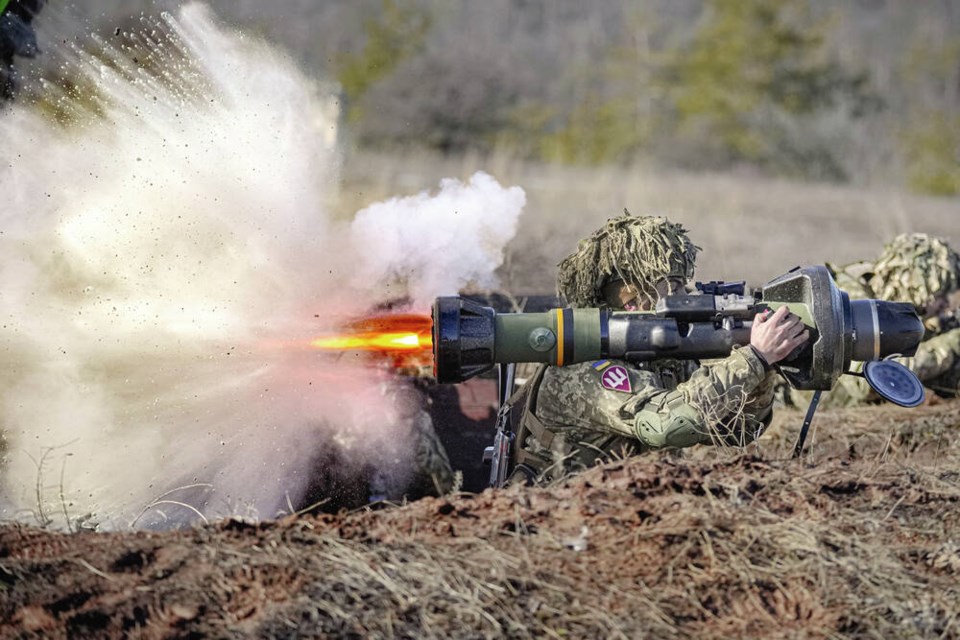A recent Angus Reid survey shows nearly half of Canadians (48 per cent) support sending lethal aid to Ukraine. That’s up from just 18 per cent in January.
Certainly far more of us favour both humanitarian aid (79 per cent) and economic sanctions (68 per cent).
But the question must be asked, leaving raw emotion aside, would it make sense for Canada to send armaments to Ukraine?
It could probably be done. Shoulder-fired anti-tank and anti-aircraft missiles are compact and easy to transport. I imagine they could be flown into neighbouring countries like Poland, and carted surreptitiously across the border.
It was by this means that the U.S. helped guerrilla fighters in Afghanistan defeat the Soviet incursion that began in 1979. Toward the end of that war, more than 350 planes and helicopters were shot down with infrared homing missiles in just two years.
Something like that scenario may unfold in Ukraine. It seems likely that even if Russia succeeds in imposing a Carthaginian peace, a guerrilla movement will be formed to carry on the conflict.
Modern ground-to-air missiles are ready-made for such an insurrection.
But is this something we should be involved in?
Conceivably, it might be unnecessary. It’s clear that the economic and financial sanctions, imposed with near unanimity by the western democracies, have taken the Russian regime aback. The ruble is in free-fall and its economy is in tatters.
Yet Vladimir Putin controls nearly all of the centres of power in that country, including the armed forces and the various security services. Those he doesn’t directly control, like the media, he intimidates into silence.
While sanctions will raise the cost of the invasion, it may well be a cost that Putin is willing to pay.
For there are deeper roots to this conflict. Throughout the Cold War, armed combat between the major powers was averted by the reality of mutually assured destruction.
The key word here was “assured.” Each side had to know that the other possessed both the means and the resolve to meet force with force.
But over the past two or three decades, that assurance has slowly ebbed away. In the main, NATO countries have not kept their militaries up to strength.
As a result, a power imbalance has emerged, encouraging countries with expansionist aims like Russia and China to believe the long-term odds are in their favour. Today Ukraine, tomorrow maybe the Baltic states or Taiwan.
This is where sending lethal aid to Ukrainian guerrilla fighters comes in. The West cannot overnight undo decades of lethargy and self-absorption.
What it can do is reinforce regions under threat. While this strategy lacks the force of compulsion, what it does do is raise the spectre of long, drawn-out conflicts that demand more staying power than the aggressor can muster.
China employed this tactic in Vietnam, confronting the U.S. with a never-ending struggle by arming the Viet Cong.
This is not deterrence by the threat of instant, mutual destruction. Rather it is deterrence by the threat of prolonged, enervating conflict in which the “victors” end up losing.
That may be the outcome in Ukraine.



